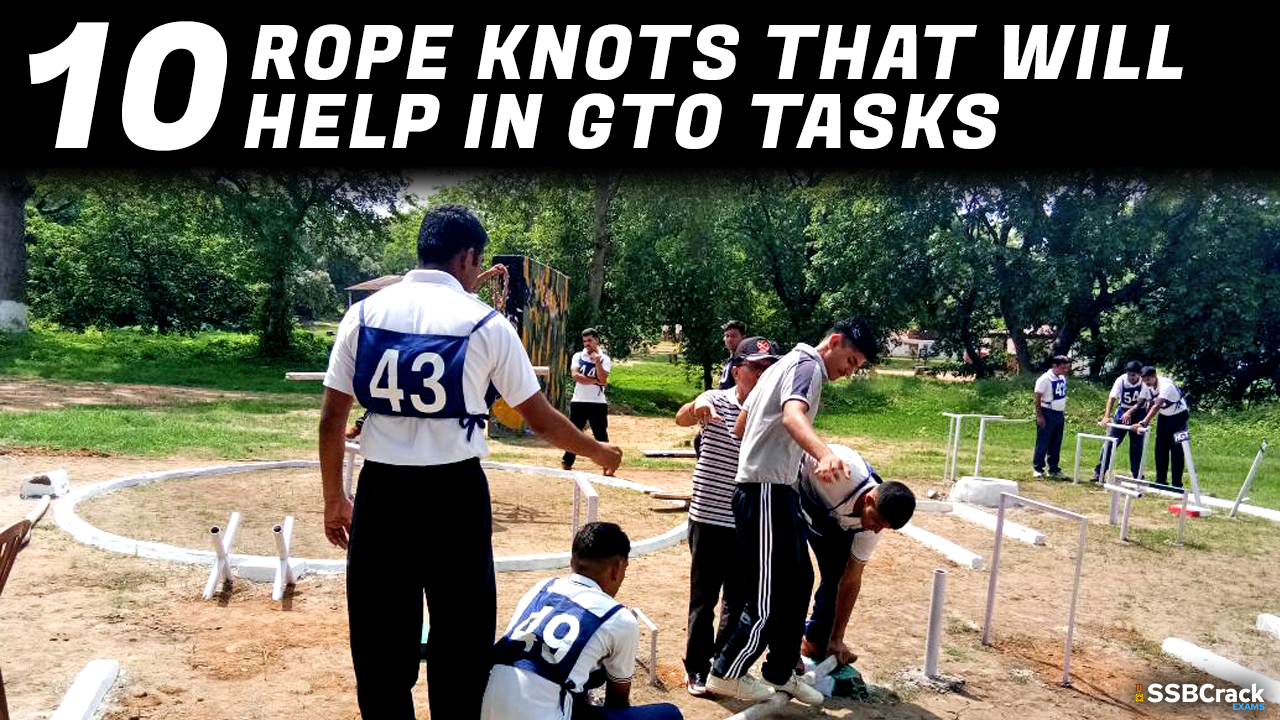Knot tying has long been considered as a part of the military program, clearly for good and purposeful reasons. It fosters discipline and focus and teaches useful skills that can be used immediately. Most people can tie just one knot (the “overhand”) but it is absolutely important to learn about the many kinds of knots that are used by armed forces personnel, scouts, mountaineers, etc and which can also prove beneficial in the GTO tasks. However, one should always be aware of some commonly used knots that are convenient and easy to use anytime in need.
- SHEET BEND AND DOUBLE SHEET BEND: The sheet bend (also known as becket bend, weaver’s knot and weaver’s hitch) is a bend, i.e. a knot that joins two ropes together. This type of knot won’t slip when ropes of dissimilar material or size are entwined. While tying the knot, be sure that the working ends are on the same side or the knot might be unreliable. If you tie a thick and thin rope together, use the thick rope to form the stationary loop and the thin rope as the working line. For greater security, (especially with plastic rope) use the double sheet bend by taking an extra coil around the standing loop. This type of knot can be used when you have tied two ropes together and the knot absolutely must not fail.
- TRUCKER’S HITCH: The trucker’s hitch is a powerful pulley with a locking knot. You use this type of knot when you need a locking pulley with a 2-to-1 mechanical advantage, such as hanging a bear bag, tying a canoe on a car. Unlike the taut-line hitch, this knot won’t slip when used with a slippery line. Firstly, form the overhand loop then pull the loop through. Make the loop exactly as shown because it won’t work if you do it backwards. Run the working end of the rope through the loop and then pull hard to form the pulley. Secure the pulley to a stationary object (like a pole or branch) with a quick-release half-hitch or, for extra security, two or more standard half-hitches.
- TWO HALF-HITCHES: Use two half hitches to tie a rope to a tree, ring or dock. If you are in need of more security, then take a second turn around the tree, or just add more half-hitches.
- BOWLINE: This type of knot is popular among mountaineers, climbers, sailors and others. Use the bowline when you want a non-slip loop at the end of a line. The knot won’t slip, regardless of the load applied. Start by forming a loop or rabbit hole. The “rabbit” (working end) of the rope goes up through the hole, around the tree, then back down the hole. The knot will slip as it tightens, so allow a long working end.
- TAUT-LINE HITCH: To create an adjustable loop that stays in place, use the taut-line hitch. This is the knot to use for staking out the guy lines of your tent.
- PRUSIK HITCH: A prusik hitch can slide up or down a stationary rope, but it will hold steadfast when weight is applied. It is used in a number of self-rescue situations. Mountaineers use the prusik for footholds to help them climb a vertical rope. Campers use it for rigging rain flies or rescuing rock-pinned canoes in a river. First, use a sheet bend or double fisherman’s knot (instructions mentioned in this article) to make a loop from a length of parachute cord or rope. Then, wrap the loop around the main line three times. The prusik hitch will slide easily along the rope, but it will jam when a load (horizontal or vertical) is applied.
- CLOVE HITCH: A versatile knot that is considered as one of the most important knots and is commonly referred to as a Double Hitch. It is often used in Scouting activities, including servings as the start or finish to many lashings.
- SQUARE KNOT: The square knot can be used to join two ropes together. Generally, it works best with two ropes of the same diameter, and should not be used to hold a heavy load.
- TIMBER HITCH: The timber hitch is a knot that is used to attach a single length of rope to a cylindrical object. This type of knot is often used to drag a log across the ground or to start a diagonal lashing.
- DOUBLE FISHERMAN’S KNOT: The double fisherman’s knot or grapevine knot is a bend, or a knot used to join two lengths of rope. The knot is used to tie together the ends of one rope, forming a loop. The loop of rope can be used for many purposes, including the prusik hitch, shown above.


















